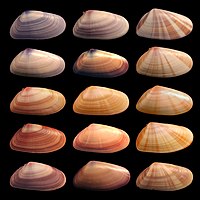
Back Fenotipe Afrikaans نمط ظاهري Arabic Fenotipu AST Fenotip Azerbaijani Фенотип Bulgarian Fenotip BS Fenotip Catalan ڕووخسارەبابەت CKB Fenotyp Czech Фенотип CV

The phenotype of an organism is the whole set of characters (or traits) of that organism.[1]
It does not mean just 'what you can see on the surface'. Rather, it means anything which can be made visible by suitable means. For example, blood groups are definitely a part of the phenotype. However, they are not visible just by looking at a person.
In biology, the phenotype is distinguished from the genotype. This was proposed by Wilhelm Johannsen in 1911 to make clear the difference between an organism's heredity and what that heredity produces.[2][3] The distinction is similar to that proposed by August Weismann, who distinguished between germ plasm (gametes or their stem cells) and somatic cells (the body).
The phenotype is important because it is exposed to natural selection:
- "From Darwin to the present day most evolutionists have considered the individual organism to be the principal object of selection. Actually, it is the phenotype which is the part of the individual that is “visible” to selection". Ernst Mayr [4]
Phenotypes are determined mainly by genes and are influenced by environmental factors. So, knowing the genome of an organism does not give an exact prediction of its phenotype.[5]
Traits vary greatly in how much they owe to heredity (nature vs nurture). The interaction between genotype and phenotype has often been conceptualized by the following relationship:
- genotype + environment → phenotype
- ↑ King R.C. Stansfield W.D. & Mulligan P.K. 2006. A dictionary of genetics, 7th ed. Oxford. p333
- ↑ Churchill F.B. 1974. William Johannsen and the genotype concept. J History of Biology 7, 5-30.
- ↑ Johannsen W. 1911. The genotype conception of heredity. American Naturalist 45, 129-159
- ↑ Mayr, Ernst 1997. The objects of selection Archived 2007-03-11 at the Wayback Machine Proc. Natl. Acad. Sci. USA 94: 2091-94.
- ↑ Brenner, Sydney and Miller, Jeffrey H. (eds) 2002. Encyclopedia of genetics. vol 3, Academic Press, San Diego.
© MMXXIII Rich X Search. We shall prevail. All rights reserved. Rich X Search